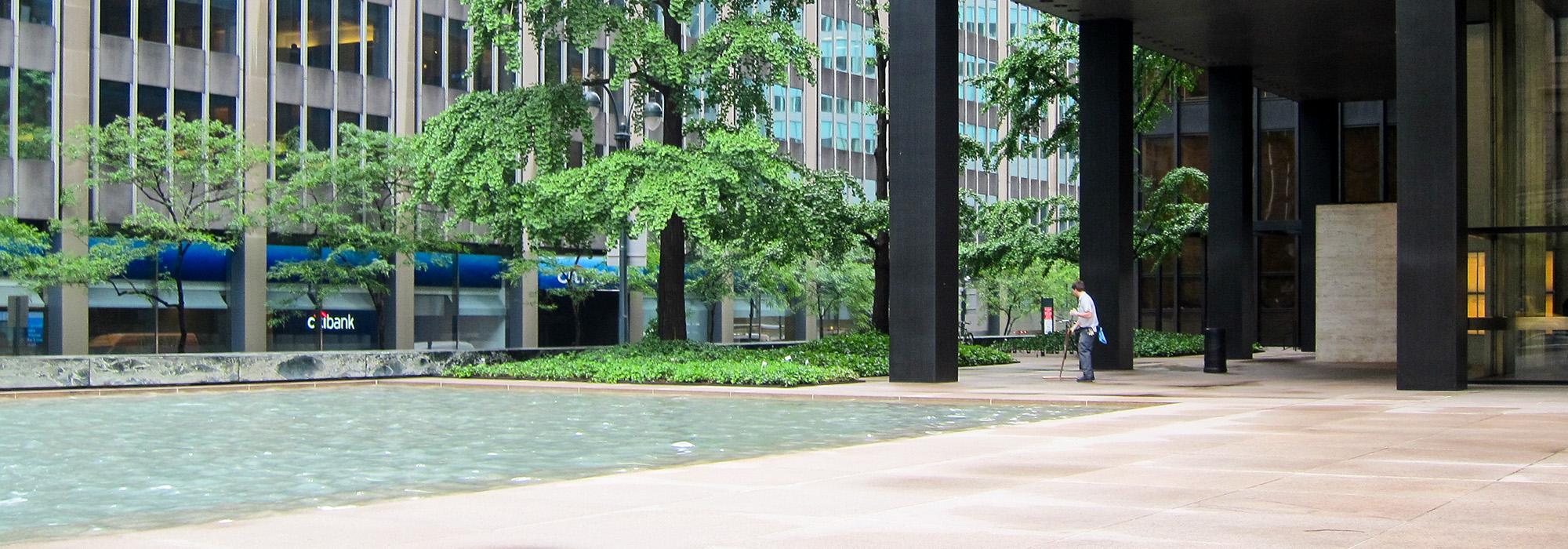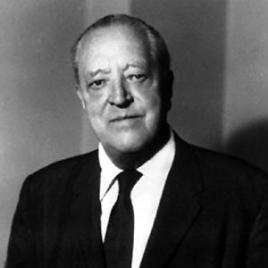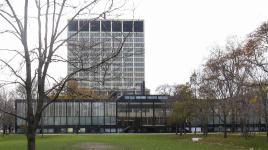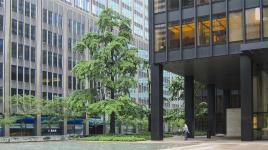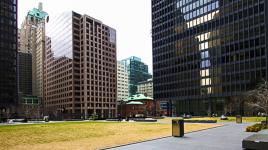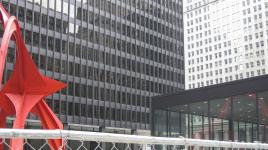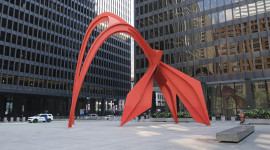Pioneer Information
Born in Aachen, Germany, Mies van der Rohe moved to Berlin in 1905, eventually joining the staff of leading architect Peter Behrens, whose firm also employed, at various times, Walter Gropius and Le Corbusier. Having designed notable houses, offices, and apartment buildings, he was appointed director of the Bauhaus in Dessau in 1930, and in 1938 he immigrated to the U.S. and became director of the architecture school of Chicago’s Armour Institute (re-named the Illinois Institute of Technology; IIT), a position he held until retiring in 1958.
Mies van der Rohe believed that a building should clearly reflect the age in which it was made, and that its means of structural support should be apparent in its design. He thus championed the International Style of architecture, characterized by an aesthetic of concrete, glass, and steel, with facades that are often cantilevered, planar, and devoid of ornamentation. Among his important post-World War II commissions is the Seagram Building and Plaza (with Philip Johnson), New York City’s first ‘tower on a plaza,’ where the footprint of the building concedes nearly half of the parcel to a podium in pink Vermont granite. He worked with landscape architect Alfred Caldwell on multiple projects, including the IIT campus, the planned community of Lafayette Park, in Detroit, and the Toronto-Dominion Centre, whose three buildings are placed within a grid of pavers, planted asymmetrically with trees and lawns. Although he was without formal architectural training, Mies van der Rohe became a formative figure in architectural Modernism. He died at Chicago’s Wesley Memorial Hospital at the age of 83.



